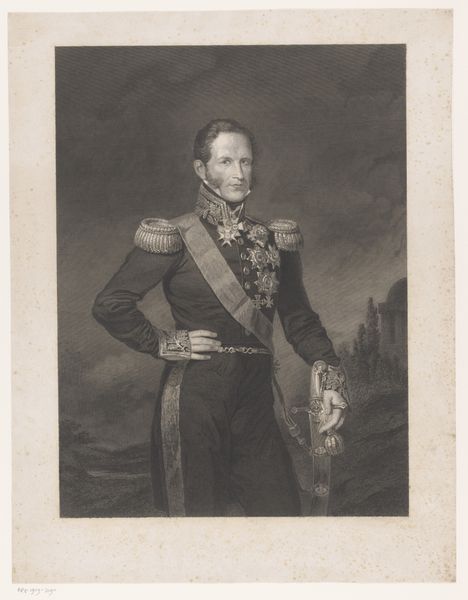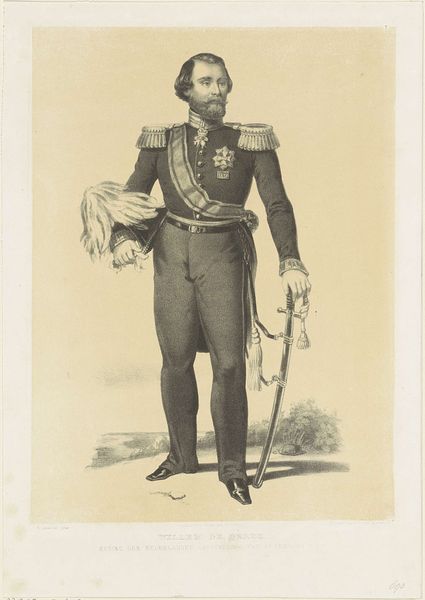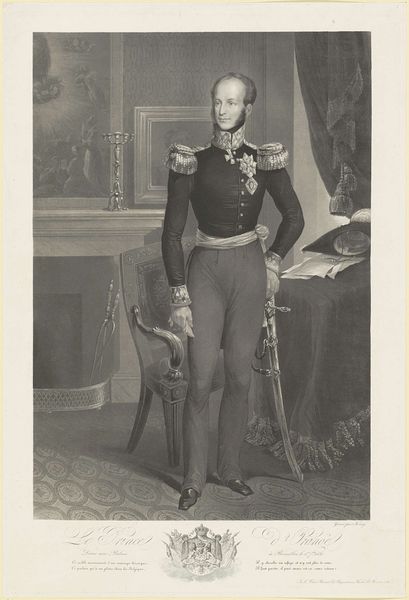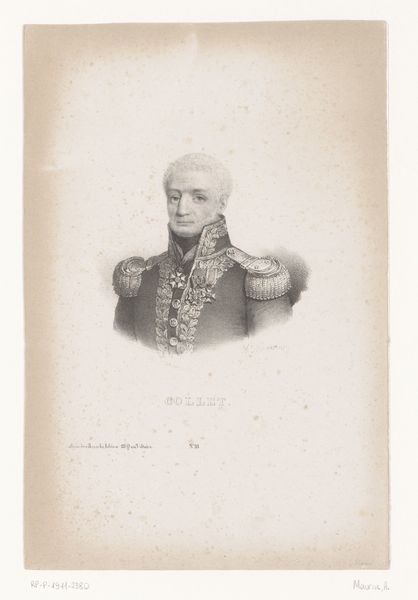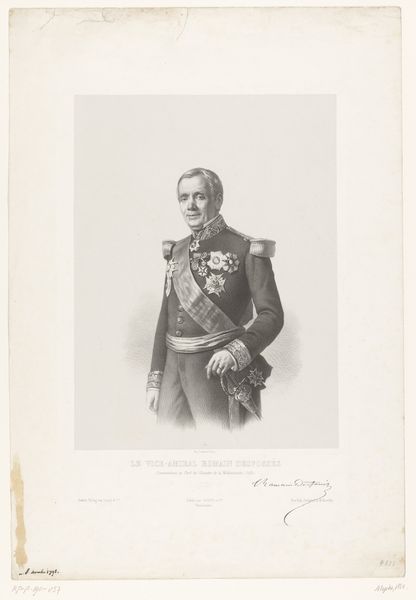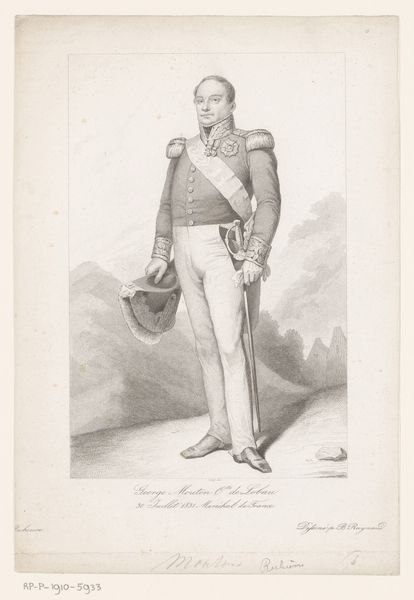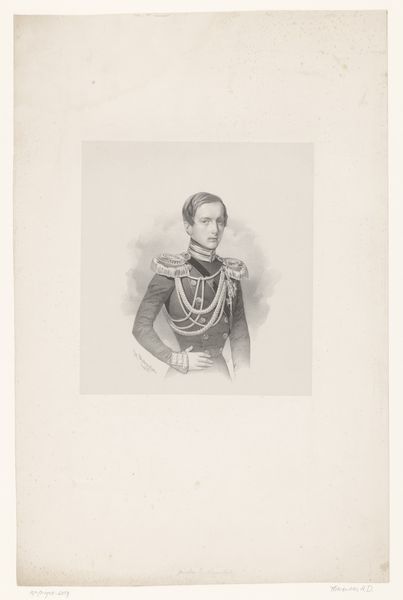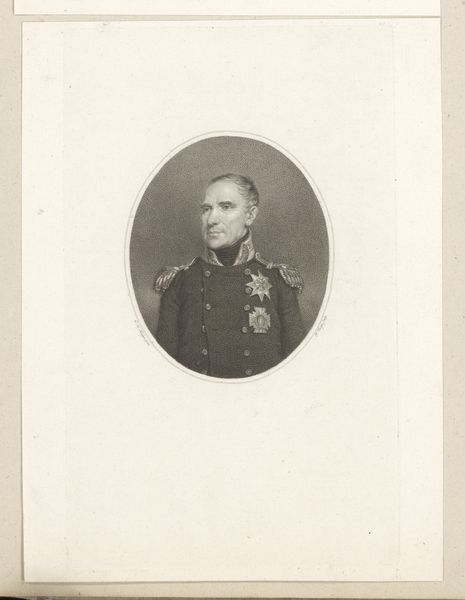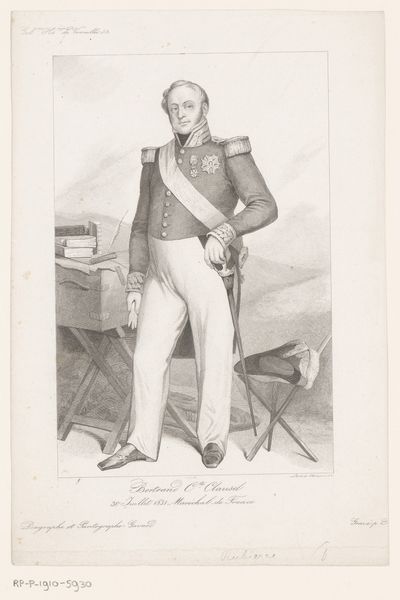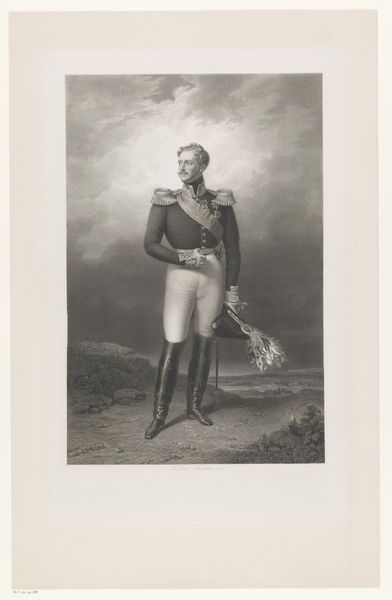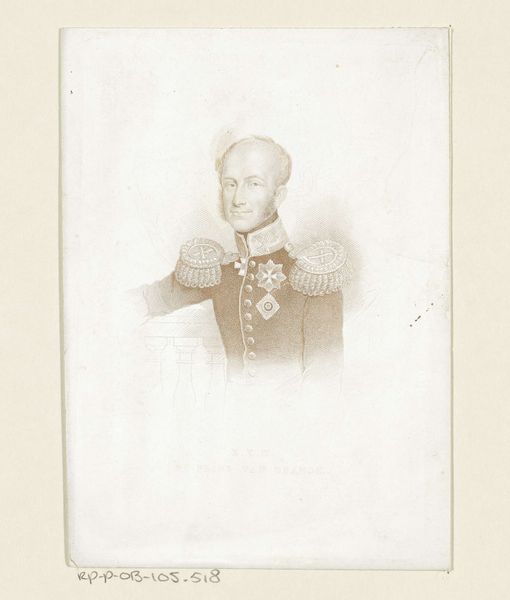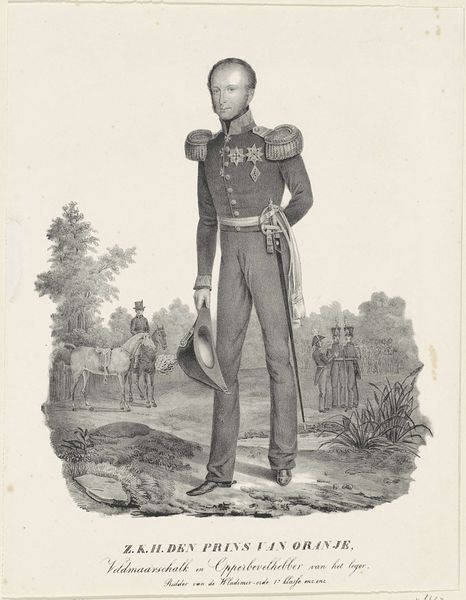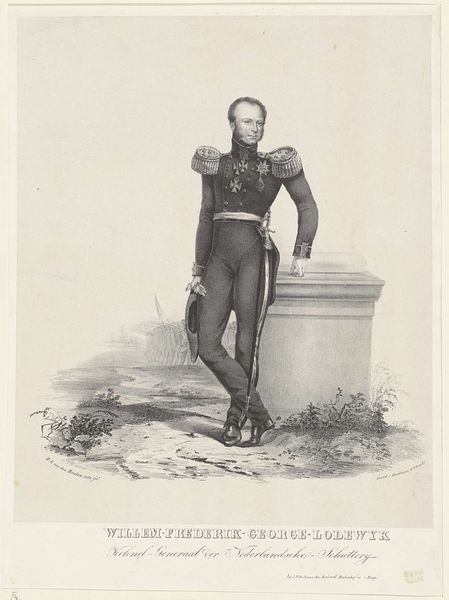
print, etching, engraving
#
neoclacissism
# print
#
etching
#
archive photography
#
historical photography
#
historical fashion
#
19th century
#
history-painting
#
engraving
Dimensions: height 530 mm, width 405 mm
Copyright: Rijks Museum: Open Domain
Editor: This is a portrait of Leopold I, made in 1834 using printmaking techniques like etching and engraving. The figure and the composition certainly communicate authority; how would you interpret this image? Curator: Well, this is more than just a likeness. Consider the symbols. Medals, sash, sword. It's a deliberate construction of power. Note the temple ruins in the background. What might those suggest about leadership, memory and the burden of history? Editor: It makes me think about how leaders want to be perceived. Maybe the artist is playing with classical ideals? Curator: Exactly! Neoclassicism wasn't just about style; it was about linking to a lineage of admired leadership. It implies a certain vision for the present linked to a glorious past. Do you see a parallel between Leopold and figures from antiquity through this imagery? Editor: That’s interesting! So, it is not simply about appearances, but about the continuous construction of leadership through inherited cultural values, then? Curator: Precisely. It's a careful choreography of visual elements to evoke ideas about tradition, strength, and legitimacy. Images as building blocks of enduring cultural memory, a conscious decision to evoke symbols and feelings! Editor: I see it so differently now. I thought it was just a formal portrait, but now I appreciate all of the calculated visual references that speak to how people want to be seen by others and remembered by history. Curator: Yes! That is how portraiture can become a reflection of not just an individual but an era. It is the intersection of power, artistry, and the human desire to leave a mark on time.
Comments
No comments
Be the first to comment and join the conversation on the ultimate creative platform.
